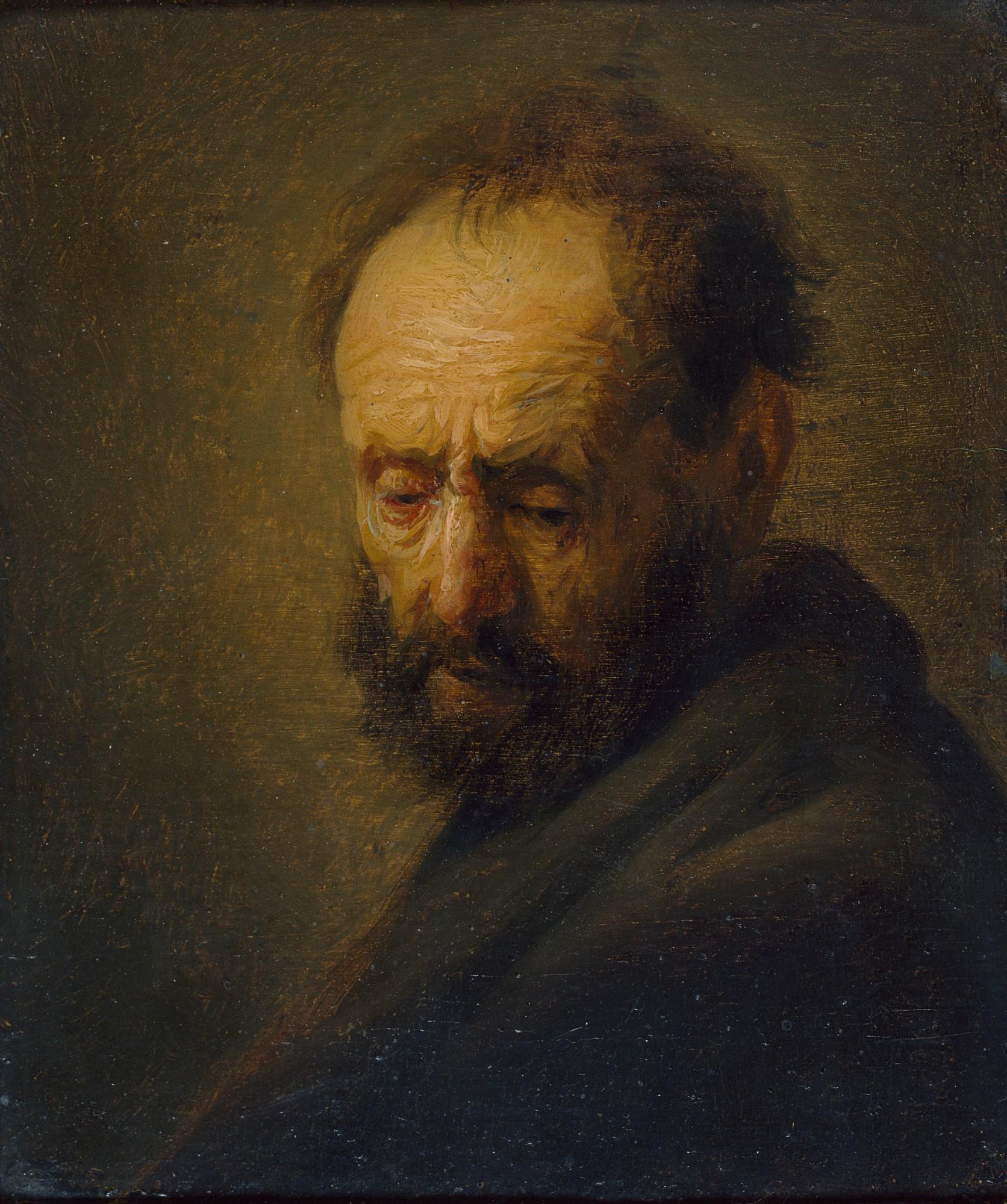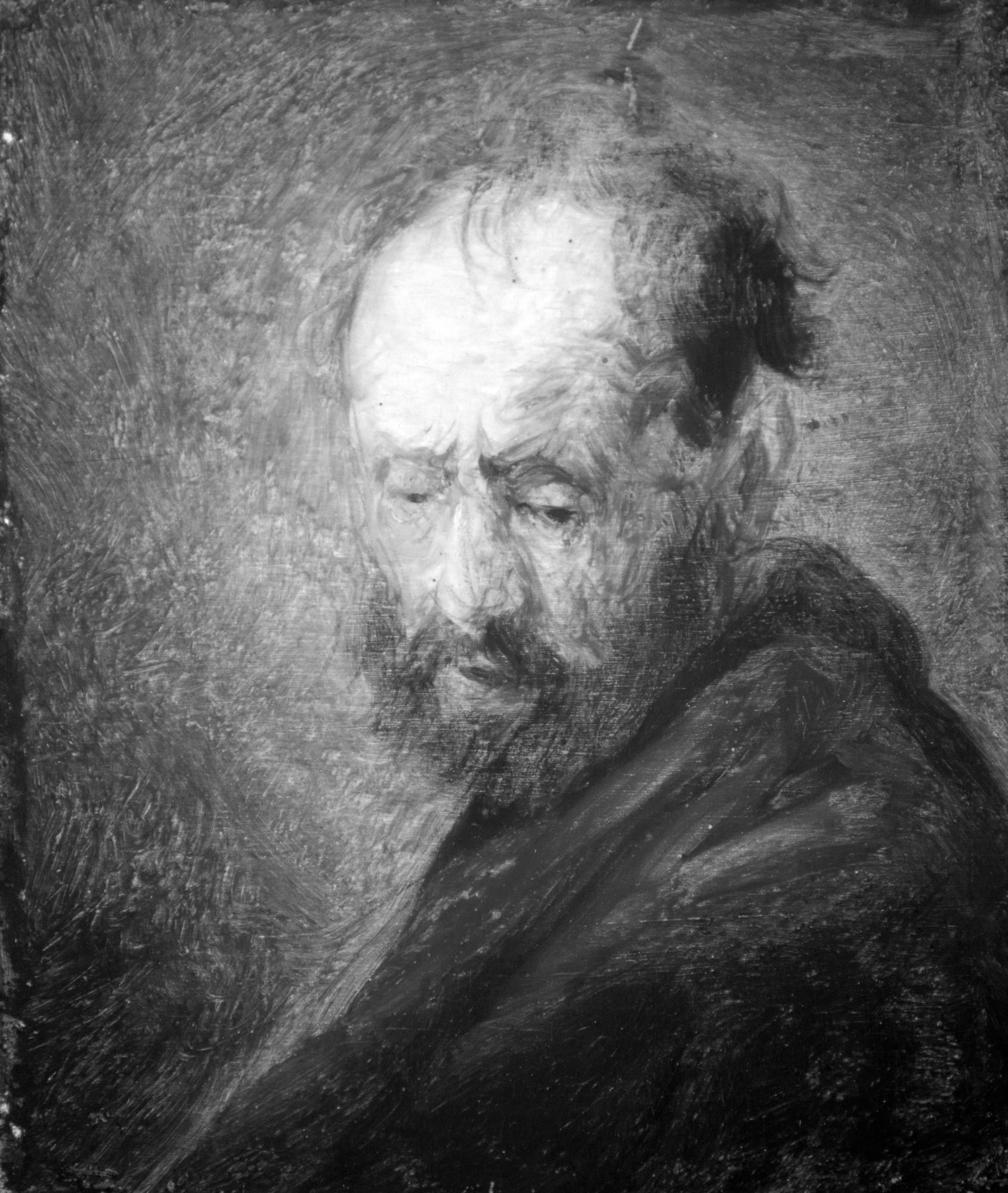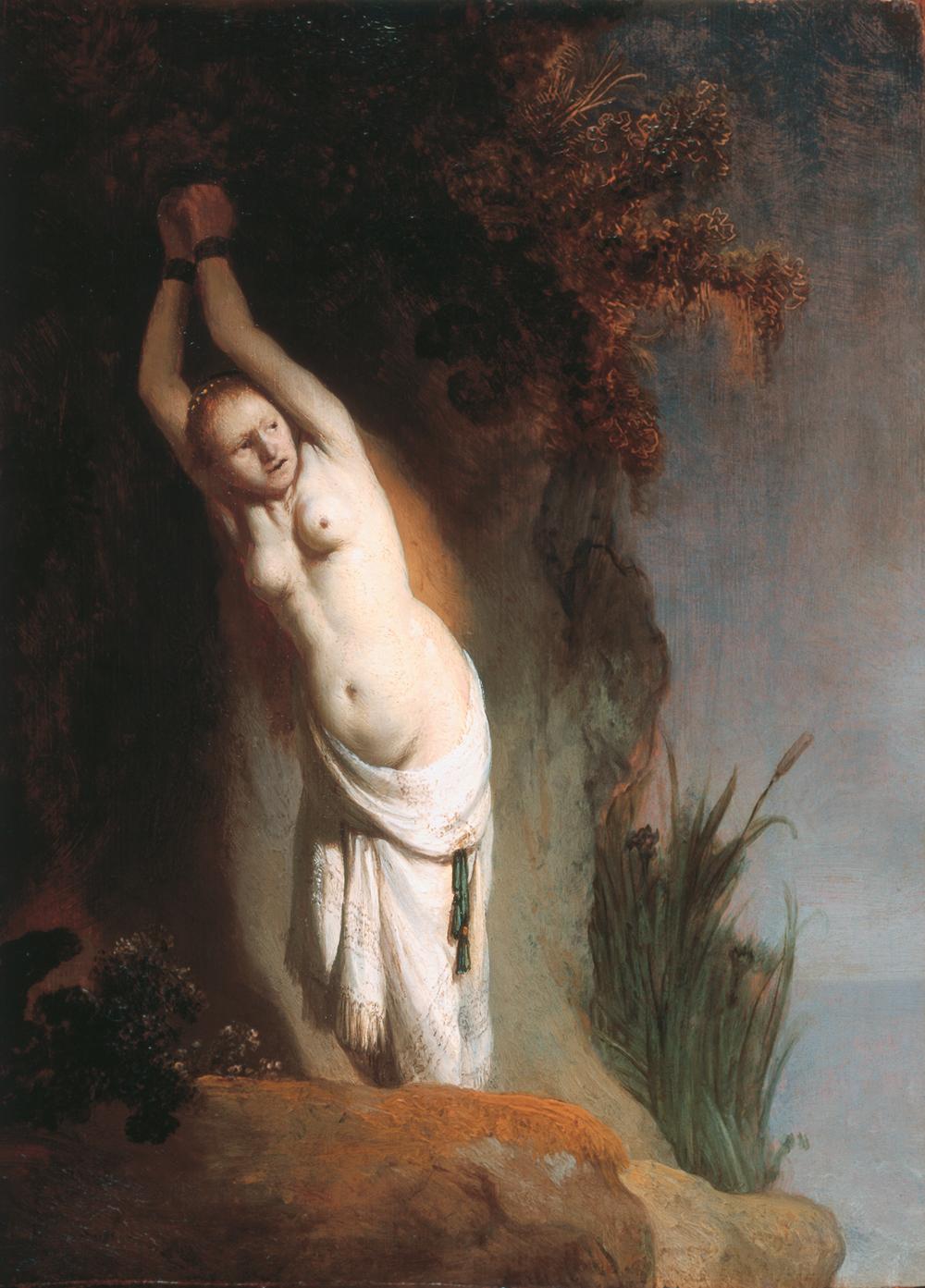For the exhibition, Ashmolean curators decided to reexamine a neglected painting in the Ashmolean’s own storage. Though gifted to the museum as an original Rembrandt work in 1951, the Rembrandt Research Project had dismissed Head of a Bearded Man (c. 1630) as a mere copy of another lost work. Other, similar copies exist, including one held at the Museum of Fine Arts, Houston.
Measuring only 6 x 5 inches, the small work shows a balding older man, his body twisted, with his face downcast, looking troubled. On the back of the painting was a faded label from a 1777 Paris auction that reads, “A Head of an Old Man, painted by Rembrandt. Very (realistic/ true to nature?) colour; height, six pouces by five wide.” This detail was not enough to convince the Rembrandt Research Project, and it is the fact that the work is painted on wood panel that would prove to be the key to unlocking its history.































